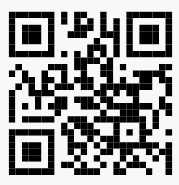| Merge Images | Merge Barcodes | Merge PDFs | Store | |
Free Trial | |
How to choose the Right Barcode Type for Your Application: the TL;DR guideThis is a quick guide for new applications. It's basic, so we'll only cover the most obvious few choices: UPC-A, EAN 13, Code 128, Code 39, QR Code, Datamatrix. Those are the major codes in use today. There are others, but you aren't missing much. OnMerge supports many other codes, but they're mainly used in specific industries, or they're legacy codes used for compatibility with older applications. Likewise, we'll only go over the major factors that might go into your decision. If you already have a system in place or have been given specifications, it's best to stick with what you've been given unless there's a good reason to switch. Do you need to meet a third party's requirements? The choice is obvious if, say a trading partner, specifies you must use a certain barcode such as UPC-A, Amazon FNSKU, ITF-14, SSCC-18, GS1-128 and others. Do you already have scanners you must support? Check what barcodes they support. Most modern scanners support all the major linear (1D) and 2D barcodes, but older or inexpensive models may only support a few linear types such as Code 39. Older scanners are less likely than newer ones to support 2D codes like QR Code and Datamatrix. Will barcodes be scanned with smartphones? Sometimes? Smartphone scanners vary, but many phones can read UPC-A, EAN 13, Code 128, Code 39, QR Code and Datamatrix. UPC-A, EAN 13 and QR Code are the surest bets. However, phones are mediocre scanners because their cameras' resolution is limited, so you it's best to keep the codes short. If you have more than 10 - 15 characters to encode, use QR Code or Datamatrix to avoid a wide, thin linear barcode that's hard to fit into a phone's scanning window. iPhones? Apple iPhones™ have a built-in scanner for QR codes only—swipe up from the very bottom of the screen to access. Scanning other types of barcodes requires third-party apps, though there are many free ones available. Will you be printing the barcodes under well-controlled conditions, or will they be printed on a wide variety of printers, or by users or others?
Are barcodes subject to being damaged, for example by rips, weather, smudges, scrapes, stains (e.g. coffee), holes, staples, getting written on, etc? If so, QR Code or Datamatrix are your natural choice since they have built-in correction that can recover from many kinds of damage. What's the nature of your data? If you are coding UPC or EAN product identfiers, the familiar UPC-A (in North America) or EAN (rest of the world) codes are the way to go. Many POS scanners work only with UPC or EAN barcodes. Otherwise, stick to Code 128, Code 39, QR Code or Datamatrix. Most consumers easily recognize QR Codes, so they're the obvious choice for website links (URLs), vCards, phone numbers, or other consumer-oriented applications where you want to say "scan me." Up to how much data will be encoded in the barcode? UPC and EAN must contain exactly 11 and 12 digits (numbers) respectively, plus one check digit which is auto-generated. That last check digit is beyond your control. Code 39 barcodes are very space-inefficient, so barcodes become overly wide over 6 - 8 characters. Width is an issue because it's tricky to accurately hold a scanner steady over a very wide and skinny barcode. That can slow the scanning process. Code 128 is more space-efficient, and barcodes up to 15 - 20 characters can be efficiently scanned. For more data than that, seriously consider using QR Code or Datamatrix. Are undetected scan errors a big deal in your application? All barcodes have some degree of error-checking built in, but UPC, EAN and Code 39's error detection is far from foolproof, with scans that appear successful but yield inexact data. Code 128 has much improved error-checking built in, but it isn't absolutely foolproof. QR Code and Datamatrix have industrial-strength error-detection built in. They can detect over 99.99999% of scanning errors, and can automatically correct most of those.
|
| Privacy Policy | Support | Buy | ||
| Terms & Conditions | Contact Us | Download Free Trial | ||
| Copyright © 2005 - 2021 Soft Horizons All trademarks are property of respective owners. | ||||





